Top 7 Texas Native Ground Covers
There are several great native Texas ground covers, and each deserves a spot in your garden. These low-growing plants are often overlooked but they can provide beautiful interest, an additional dose of color, a natural weed barrier, and soil erosion control.
Want to try a Texas native ground cover in your garden? Start by downloading my FREE 7 Texas Native Ground Covers PDF. You can take this handy one-pager with you to the nursery.
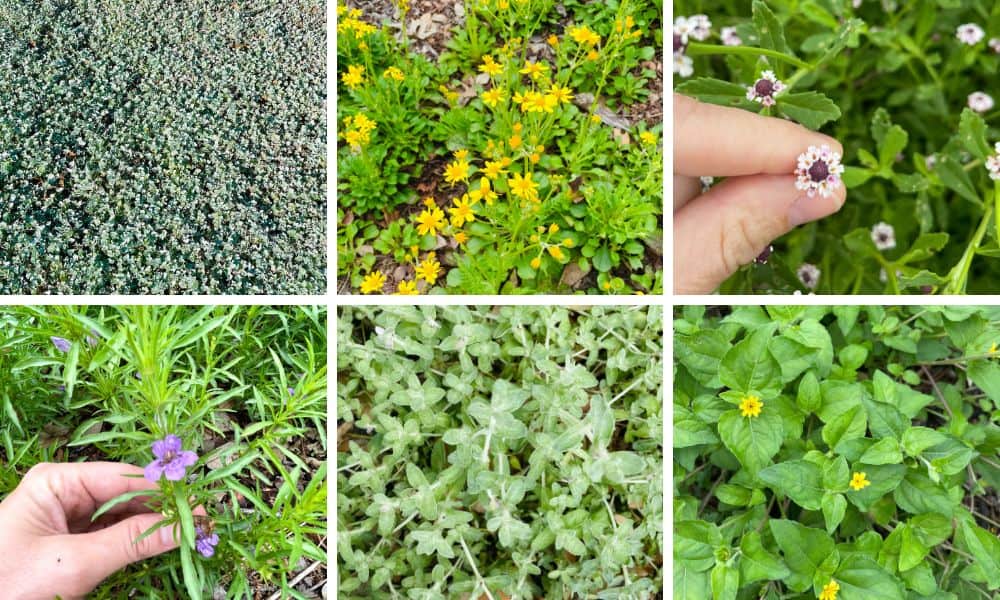
Skip the non-native ground cover plants like English Ivy, which can be an invasive plant in natural areas, or Asiatic Jasmine, which is common here in San Antonio. Opt for these beneficial Texas native plant species instead!
Here are five of my favorite Texas native groundcovers, most of which I have in my own garden.
7 Texas Native Ground Covers For Your Garden
1) Frogfruit (Phyla nodiflora)
I am listing Frogfruit (Phlya nodiflora) first because it is my absolute favorite. This pretty ground cover with dainty white flowers is a pollinator magnet. It is fast growing in a full sun area, but can handle partial shade.
It can tolerate foot traffic, poor soil, and a variety of soil moisture conditions. Talk about a winner!
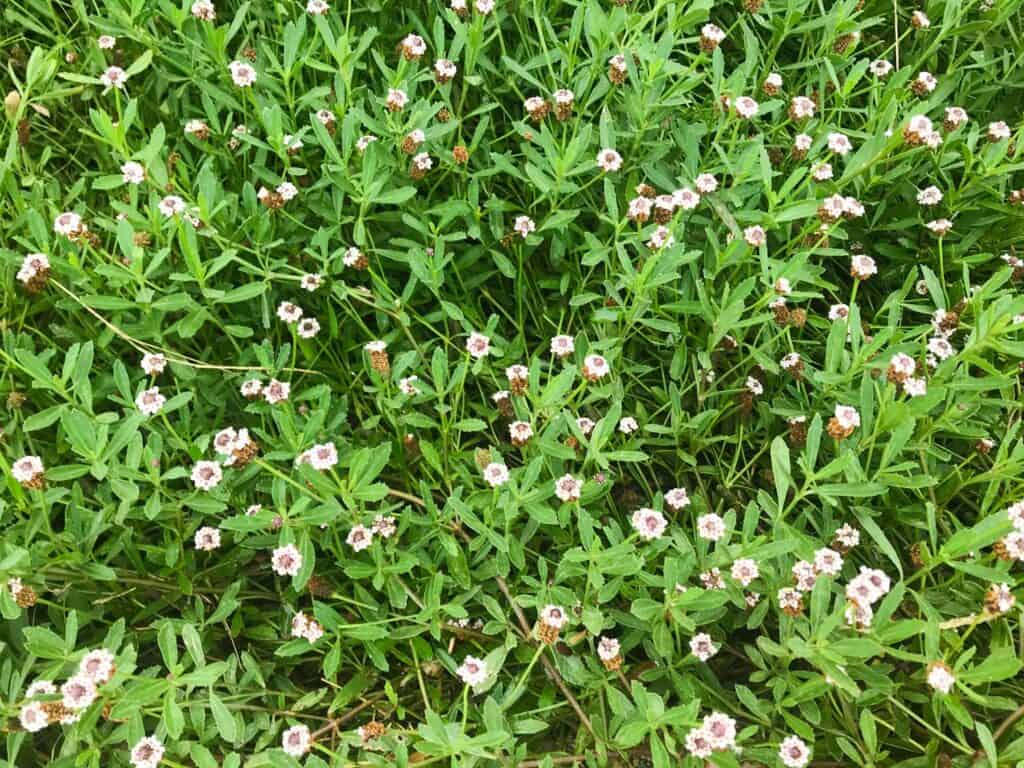
- Native range: southern United States
- Height: 6 inches
- Sun requirements: Full sun (preferred) to part shade
- Growth habit: Rapid growth with sufficient water and sunlight. Grows taller with more water. Spreads by forming new plant roots at the nodes.
- Evergreen or deciduous: Semi-evergreen in warm winters, otherwise will die back. New growth starts coming back in early spring.
- Wildlife benefits: This ground cover is the best choice for attracting pollinators! It is a host plant for Phaon Crescent, White Peacock and Common Buckeye butterflies.
2) Woolly Stemodia (Stemodia lanata)
I think this is one of the most attractive ground covers around! Woolly Stemodia’s silvery foliage can provide a nice contrast to leafy green perennials in the garden. It is a great rock garden plant and can flow nicely over a rock wall or a container pot. Woolly Stemodia has a long growing season and can be semi evergreen ground cover in milder Texas winters.
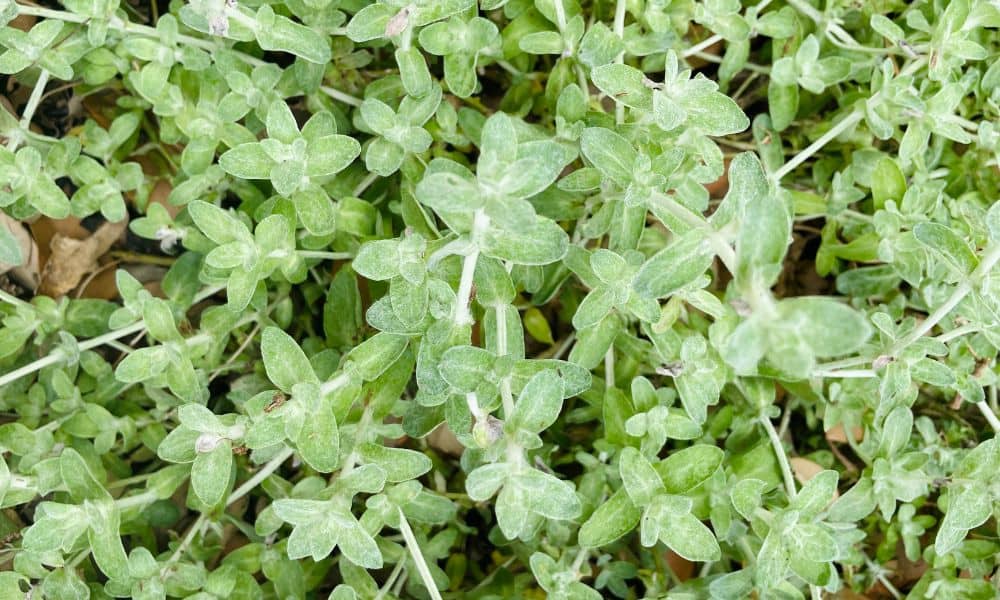
- Native range: South Texas and Northern Mexico
- Height: less than 6 inches
- Sun requirements: Part sun
- Growth habit: Super low maintenance ground cover. Spreads by rooting at nodes to provide a dense cover and natural weed control.
- Evergreen or deciduous: Semi-evergreen
- Wildlife benefits: High deer resistance.
3) Snakeherb (Dyschoriste linearis)
This taller ground cover can grow up to a foot and height. Starting in late spring, its erect green stems are dotted with pretty purple flowers that attract butterflies. Snakeherb (Dyschoriste linearis) likes moist well-drained soil. It is a dense ground cover can prevent weed growth.
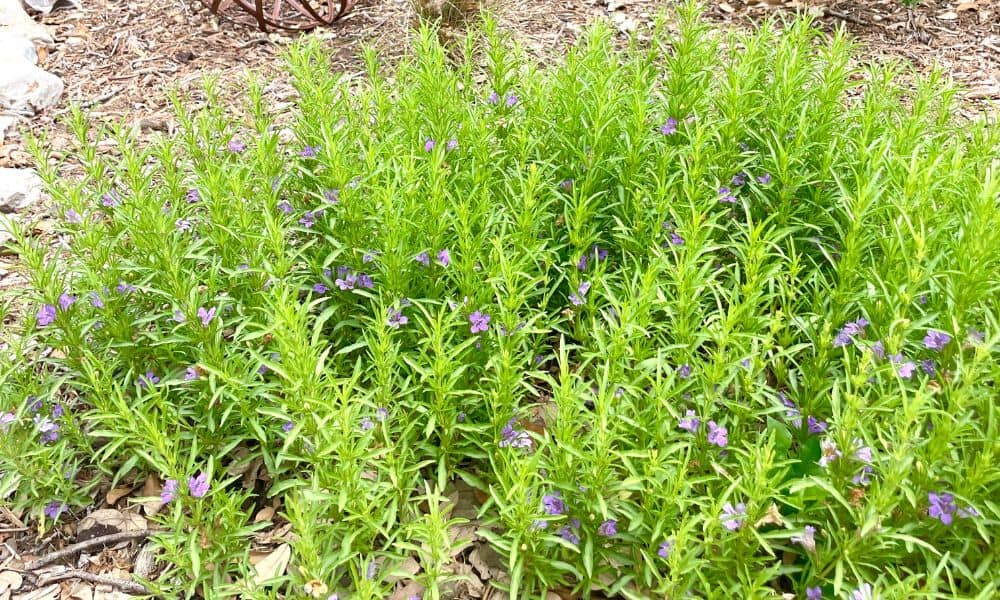
- Native range: Central and West Texas
- Height: 6-12″
- Sun requirements: Full sun
- Growth habit: Relatively slow growing ground cover.
- Evergreen or deciduous: Deciduous
- Wildlife benefits: Host plant for Common Buckeye butterfly. Flowers attract butterflies. Not deer resistant.
4) Silver Ponyfoot (Dichondra argentea)
Another beautiful ground cover with silver foliage is Silver Ponyfoot (Dichondra argentea). It looks especially great planted at the base of succulents and cacti in ornamental grasses. It can also make a gorgeous addition to rock gardens and containers, where it can trail over the side.
I have seen it thrive in sunny gardens, however I have had a hard time getting this to grow in my garden and have killed a few of these plants. I’m not sure why!
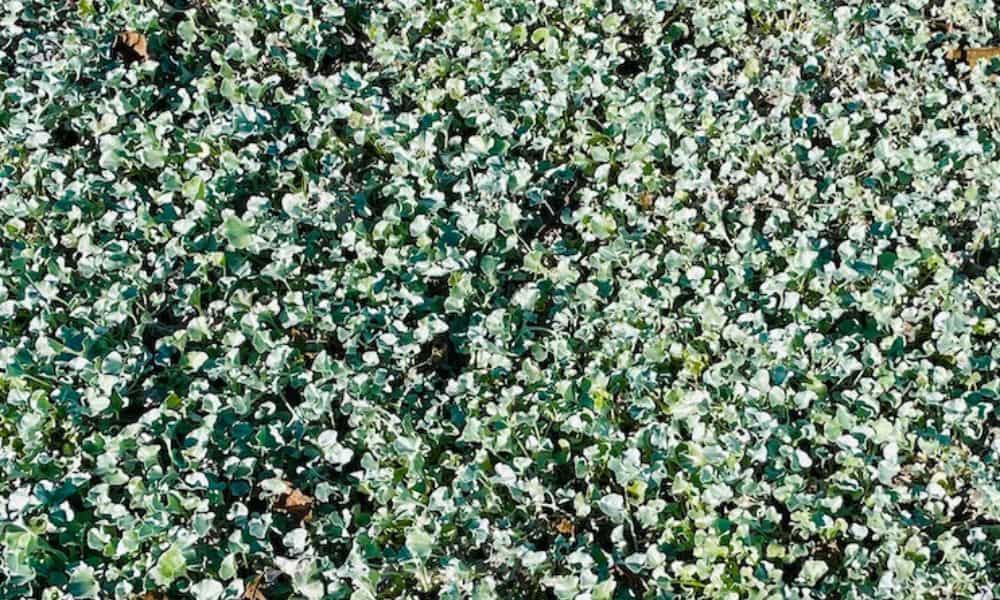
- Native range: West Texas and New Mexico
- Height: 3 inches
- Sun requirements: Sun to light shade
- Growth habit: Low growing, dense ground cover.
- Evergreen or deciduous: Evergreen (although treated like an annual in colder winters. It is cold hardy to 20 degrees F).
- Wildlife benefits: N/A
5) Straggler Daisy (Calyptocarpus vialis)
Also known as Horseherb, this native species thrives in part shade to full shade. Straggler Daisy is either loved or hated! It is a great replacement for turf grass in shady areas of your yard. In fact, you may find a growing there already.
Some people consider it a lawn weed, but it is quite a lovely ground cover in areas where grass won’t grow. Straggler Daisy may struggle by late summer during drought conditions or full sun. Its tiny yellow flowers attract pollinators.
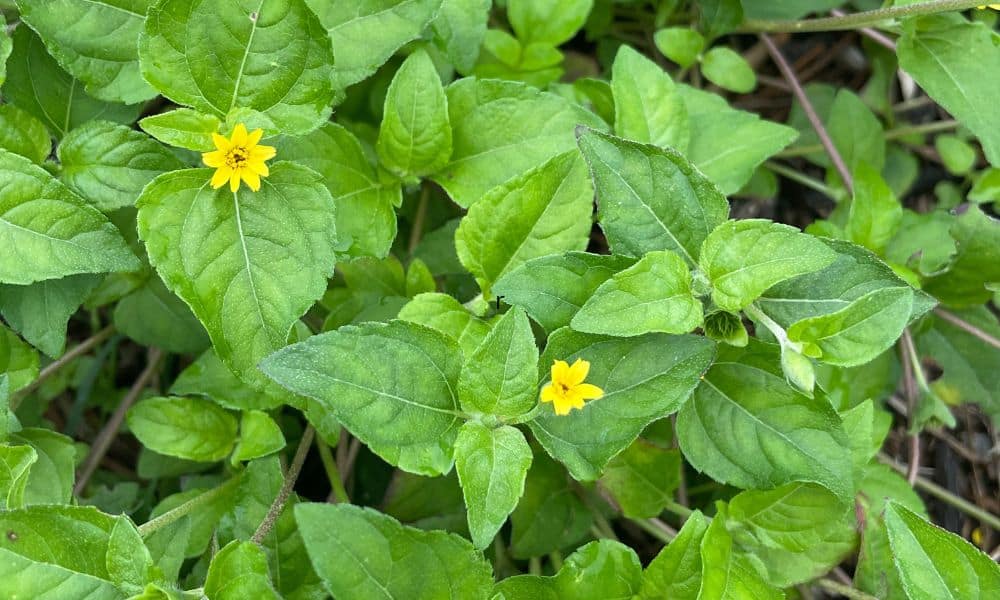
- Native range: much of Texas
- Height: <6 inches
- Sun requirements: Sun – Shade
- Growth habit: Low-growing and fast-spreading.
- Evergreen or deciduous: Deciduous
- Wildlife benefits: Flowers attract small butterflies.
6) Golden Groundsel (Packera aurea)
Also known as Golden Ragwort, this native ground cover starts blooming in late winter / early spring here in Texas. It prefers moist soil and some shade, and would do well in a woodland garden setting. Its bright yellow flowers top stems that rise up from the basal leaves, which form a dense ground cover.
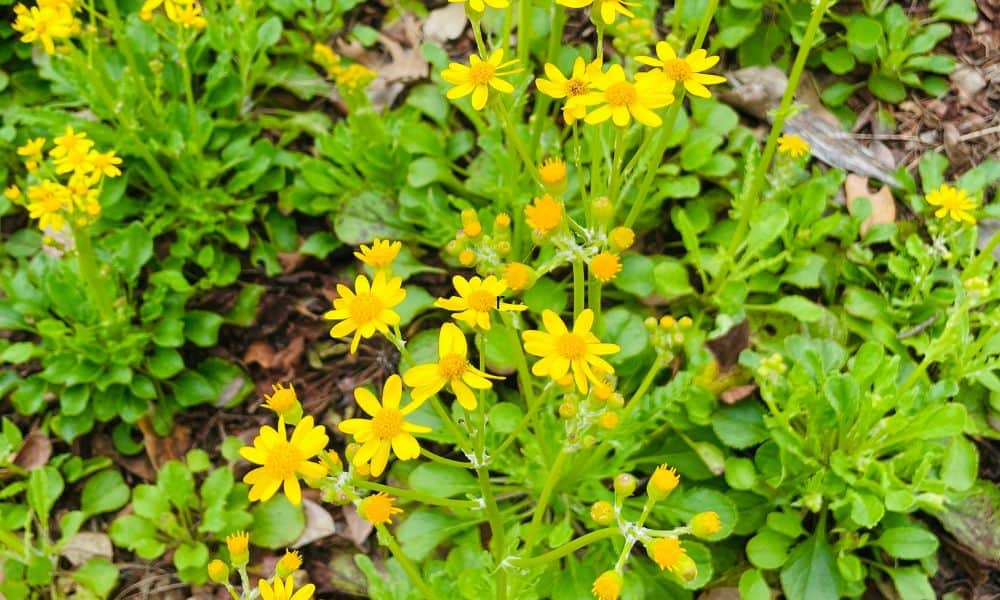
- Native range: Eastern U.S., rare in Texas
- Height: Flowers reach up to 2 ft. Basal leaves <6 inches
- Sun requirements: Part sun – shade
- Growth habit: Individual plants that spread by rhizomes to form a dense ground cover.
- Evergreen or deciduous: Evergreen in Texas winters
- Wildlife benefits: Flowers attract pollinators in early spring.
7) Gregg’s Dalea (Dalea greggii)
This West Texas native attracts a variety of butterflies and bees to its purple blooms. Gregg’s Dalea is also a butterfly host plant. Its silvery foliage grows around 6 inches high. It can’t handle poorly drained soil or cold winters.
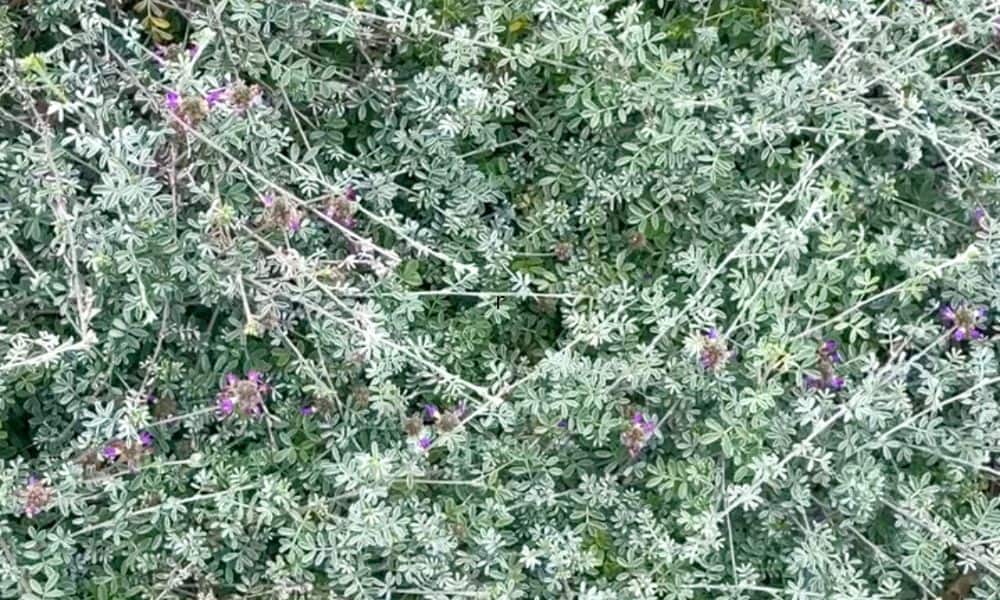
- Native range: West Texas, New Mexico and Mexico
- Height: 6-12 inches
- Sun requirements: Sun to part shade
- Growth habit: Sprawling feathery foliage.
- Evergreen or deciduous: Deciduous
- Wildlife benefits: Host plant for butterflies and nectar plant for butterflies and native bees.
Download the Free PDF: Texas Native Ground Covers
I created a handy one-page PDF for you to print and take along with you to the plant nursery. It includes a thumbnail photo of each plant along with both its common and scientific name and helpful growing info. Get it here:
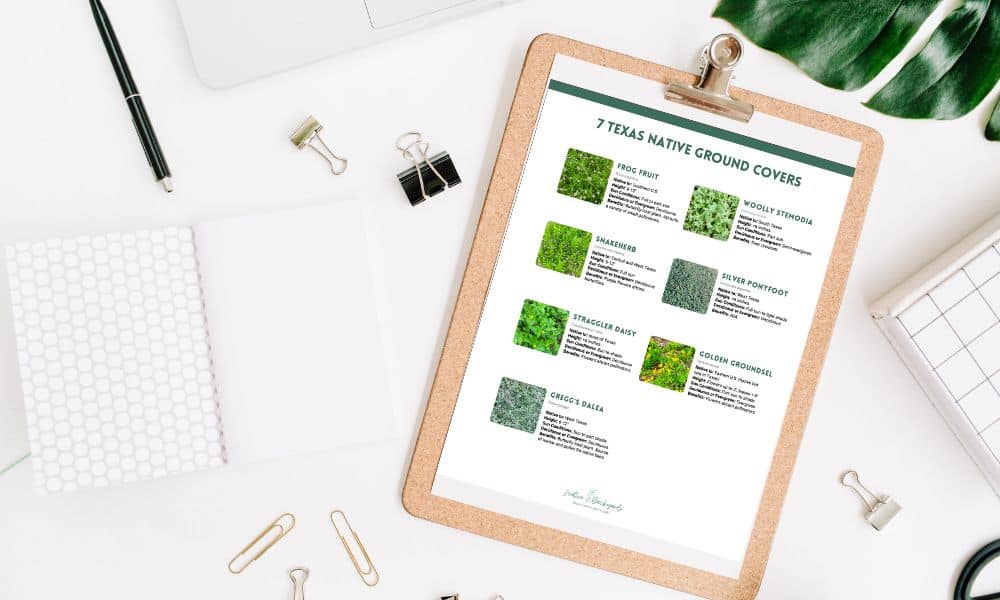
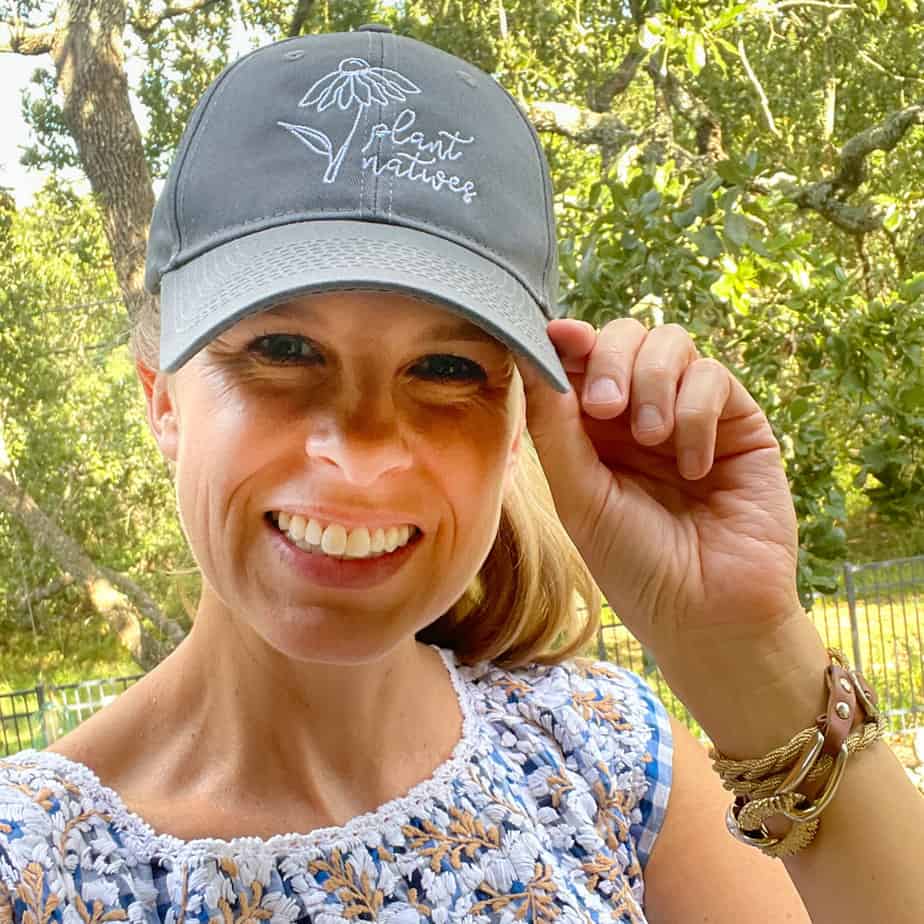
Welcome to Native Backyards! I’m Haeley from San Antonio, Texas, and I want to help you grow more native plants.
I have seen firsthand how the right plants can bring your yard to life with butterflies, bees, and birds. I’ve transformed my yard with Texas natives and I’m excited to share what I’ve learned with you.
Join my newsletter here! – each week I’ll send you helpful tips to make your native plant garden a reality!
Want to learn more about me and my garden? Check out my About page!

Do any of these ground covers do well if mowed back to a few inches occasionally? Looking for a good lawn replacement but don’t want it to look overgrown all the time.
Hi Raynee, most of these groundcovers are so low-growing you won’t need to mow them. Frogfruit and Straggler Daisy can take an occasional mowing.
Hi! We live on about 2 acres East of Dallas. Johnson Grass is a plague around here. I’d like to find an aggressive low ground cover (under a foot tall) weed that will choke out Johnson Grass and not require mowing. We’re doing staggered flagstone close to the house and would like something that’ll grow between the stones about 6-8” apart.
Thank you!
Hi Kevin, you could try Frogfruit if it is a full sun area. However, I’m not sure any ground cover will fully choke out Johnson Grass. You may have to resort to an herbicide to take care of it before planting anything.
Hi! I’m buying a house in Austin that has no irrigation system. Currently the backyard is green but we’ve had lots of rain and what’s growing looks to be some sort of low opportunistic weed (not ground cove). I don’t want to put irrigation system in, but I also don’t want bare dirt in my backyard come August when there’s no rain. It’s a large flat backyard with part shade, but mostly sun. I would prefer something that approximate to grass texture in the main area of the yard, I don’t mind mowing, and then edging the sides maybe with ground cover that flowers..
Any suggestions?
Hi Susan, check out native buffalograss. It is a low growing bunch grass that you only have to mow a couple times a year. Very low water and low maintenance: https://seedsource.com/buffalograss/